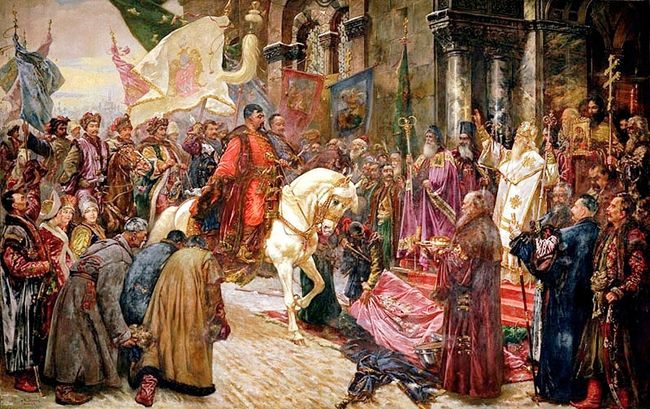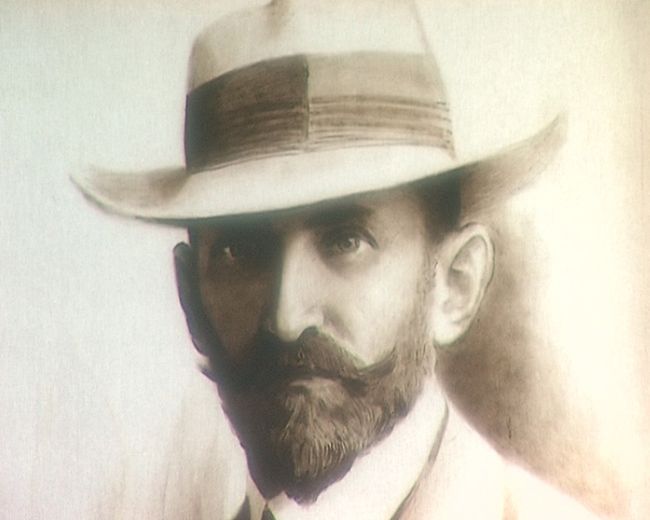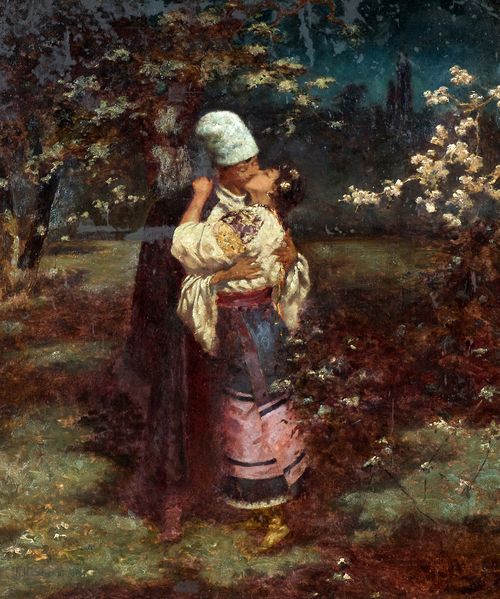“You need not only talent, but a lot of courage too”
It is the 150th birth anniversary of the master of historical genre Mykola Ivasiuk
The artist was born and grew up in Zastavnia. He obtained education in Chernivtsi, where in 1877-84 he studied at a local orthodox higher real school, where painting was taught by an outstanding Bukovyna artist, a recognized master of portrait Yustym Pihuliak. Namely he fostered in Mykola Ivasiuk the love to historical genre of painting, which will later become a leitmotif of his creative work. The teacher helped the talented youth to enter the Vienna Academy of Fine Arts. And in 1890-96 Ivasiuk studied at Bayern Academy of Fine Arts (Munich).
In 1892 the artist exhibited his works for the first time at an exhibit of an art lovers society in Lviv, and next year he successfully exhibited the work Khmelnytsky near Zboriv. After this painting Ivasiuk completely dedicated himself to the historical genre. In Munich the artist started to work on the main work of his life – monumental picture Bohdan Khmelnytsky Enters Kyiv. This work required much creative power and energy. “This is the most important goal I have set before myself,” he wrote to Osyp Makovei. The artist worked on it for 20 years (1892-1912).
According to the contemporaries, before the World War I a colored replica of the picture Bohdan Khmelnytsky Enters Kyiv was present nearly in every Ukrainian house in western Ukraine.
During his first solo exhibit in Chernivtsi the artist showcased the canvases Bohdan Khmelnytsky Enters Kyiv, Bohun near Berestechko, The Battle near Khotyn, genre pictures Recreation, Harvesting, A Bukovynian, Mother, No Bread, A Poor Peasant House, and many others. His first biographer and spiritual mentor, critic and publicist Osyp Makovei wrote, “Indeed it does not only requite talent here, but a lot of courage too to follow the way Mykola Ivasiuk chose.”
Mykola Ivanovych worked as a portraitist, as well as battle-pieces painter, gave art lessons – taught painting and drawing to adults in the premises of the Industry Museum. In 1898 Ivasiuk together with Pihuliak founded the first drawing school for talented, but poor youth in Bukovyna.

During the World War I Mykola Ivasiuk was interned to Russia. In 1919 the artist returned to his fatherland and lived mostly in Lviv, the same year the UNR Directory government entrusted him with creating originals of UNR post stamps. It is known that six stamps were issued based on his pictures. Their nominal value was: 2 hryvnias (violet, Ukrainian with blue-and-yellow flag), 3 hryvnias (orange, a Ukrainian house), 30 hryvnias (bright-brown, Polubotok in prison), 50 hryvnias (olive, a Bandurist Cossack), 80 hryvnias (bright-blue, Zaporozhian baidak boats on the sea), 200 hryvnias (gray in red frame, a windmill). The stamps were printed in Vienna.
On 1925 on the initiative of the People’s Commissariat of Education, with the assistance of Yurii Kotsiubynsky the artist moved to Kyiv and became a citizen of the USSR. At first he was working at the department of art studies of the All-Ukrainian Academy of Sciences, and in 1927 he started to work at the Bureau of the Press of the All-Ukrainian Photo and Cinema Department. In this period Ivasiuk created a number of sketches for the Kino magazine, and posters for films. Four posters by Ivasiuk with his signatures are preserved at the Central Scientific Library of the National Academy of Sciences of Ukraine. His oil portrait of Mykola Skrypnyk created in fatal 1933 is also stored there. It is unknown what happened to the vast oeuvre of Ivasiuk, especially to the works that depicted fragments of battles of the Sich Riflemen. In 1928-30 Ivasiuk worked as an artist at the staging workshop at Kyiv Film Factory, and then as a researcher at the graphical subdivision of cartography department of the All-Ukrainian Building Institute.

In 1937 Ivasiuk was arrested by NKVD. The date of birth of the artist has become known that only recently: the outstanding master of historical genre was executed in a Bolshevik torture chamber in Kyiv and buried in Bykivnia on November 27, 1937. The artist was rehabilitated posthumously in 1980 because of the “lack corpus delicti.”
Ivasiuk’s oeuvre includes over 500 art masterpieces, such as Bohdan Khmelnytsky enters Kyiv, Bohdan Khmelnytsky near Zboriv, The Battle near Khotyn, Bohdan Khmelnytsky and Crimean Khan near Kamianets-Podilsky, Ivan Bohun in the Battle near Berestechko, as well as genre pictures, portraits of the workers of Ukrainian culture. A part of the artist’s oeuvre is stored in Chernivtsi. His pictures are preserved in funds and present in the expositions of the Art Museum and Local Lore Museum. His iconostases can be seen in Zastavnia, Kitsman, and some villages in Bukovyna. Overall, no more than 15 pictures by Ivasiuk are preserved in Ukraine, most of his canvases are stored in private collections and museums of Poland, Germany, Austria, Romania, and Canada. The fate of most of the works by the artist remains unknown. During the wars and the collapse of the empires Ivasiuk’s pictures were taken abroad.
The residents of Bukovyna are proud of their talented compatriot, whose oeuvre has enriched the treasury of history. Thankful Zastavnia residents installed a memorial plaque on the house where the Ivasiuk family used to live. A children’s art school in Zastavnia was named after the famous compatriot. A ceremony of awarding the raion Mykola Ivasiuk Prize for the workers of culture is held every April.
Newspaper output №:
№32, (2015)Section
Time Out





